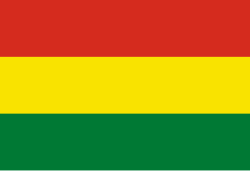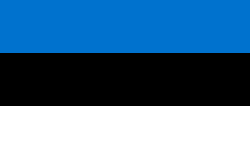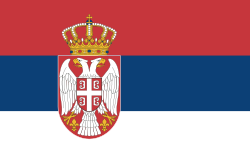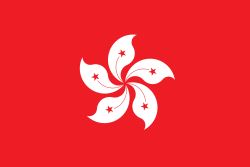US Open 2016 – čtyřhra juniorů
| US Open 2016 | |
|---|---|
| Vítězové: | |
| Finalisté: | |
| Výsledek: | 6–3, 7–6(7–4) |
| Soutěže | |
| mužská dvouhra • mužská čtyřhra | |
| ženská dvouhra • ženská čtyřhra | |
| smíšená čtyřhra | |
| dvouhra juniorů • čtyřhra juniorů | |
| dvouhra juniorek • čtyřhra juniorek | |
| US Open čtyřhra juniorů | |
| 2015 ◄◄ 2016 ►► 2017 | |
| Grand Slam 2016 čtyřhra juniorů | |
| Australian Open • French Open Wimbledon • US Open | |
Čtyřhra juiorů US Open 2016 probíhala v první polovině září 2016. Do singlové soutěže newyorského tenisového grandslamu nastoupilo třicet dva párů. Obhájcem titulu byla kanadská dvojice Félix Auger-Aliassime a Denis Shapovalov, jehož členové nestartovali společně. Auger-Aliassime nastoupil s krajanem Benjaminem Sigouinem. Shapovalov se odhlásil pro zranění.
Vítězem juniorské čtyřhry se stala nenasazená dvojice složená ze 17letého Bolivijce Juana Carlose Aguilara a 18letého Brazilce Felipa Meligeniho Alvese, která ve finále zdolala kanadské turnajové trojky Félixe Augera-Aliassimeho s Benjamin Sigouinem po dvousetovém průběhu 6–3 a 7–6. Oba šampioni vybojovali premiérový grandslamový titul v kariéře[1] a každý si do juniorského kombinovaného žebříčku ITF připsal 270 bodů.
Nasazené páry
 Ulises Blanch /
Ulises Blanch /  Josuke Watanuki (1. kolo)
Josuke Watanuki (1. kolo) Kenneth Raisma /
Kenneth Raisma /  Stefanos Tsitsipas (2. kolo)
Stefanos Tsitsipas (2. kolo) Félix Auger-Aliassime /
Félix Auger-Aliassime /  Benjamin Sigouin (finále)
Benjamin Sigouin (finále) Miomir Kecmanović /
Miomir Kecmanović /  Alexei Popyrin (čtvrtfinále)
Alexei Popyrin (čtvrtfinále) John McNally /
John McNally /  Jeffrey John Wolf (1. kolo)
Jeffrey John Wolf (1. kolo) Marvin Möller /
Marvin Möller /  Louis Wessels (2. kolo)
Louis Wessels (2. kolo) Elliot Benchétrit /
Elliot Benchétrit /  Geoffrey Blancaneaux (čtvrtfinále)
Geoffrey Blancaneaux (čtvrtfinále) Eduard Güell Bartrina /
Eduard Güell Bartrina /  Genaro Alberto Olivieri (1. kolo)
Genaro Alberto Olivieri (1. kolo)
Pavouk
| Legenda | ||
|
|
|
Finálová fáze
| Semifinále | Finále | |||||||||||
| | 6 | 4 | [9] | |||||||||
| 3 | | 3 | 6 | [11] | ||||||||
| 3 | | 3 | 64 | |||||||||
| | 6 | 77 | ||||||||||
| | 4 | 77 | [10] | |||||||||
| | 6 | 61 | [2] | |||||||||
Horní polovina
Dolní polovina
Odkazy
Reference
V tomto článku byl použit překlad textu z článku 2016 US Open – Boys' Doubles na anglické Wikipedii.
- ↑ Estadão Conteúdo. Sobrinho de Fernando Meligeni conquista título de duplas juvenis no US Open [online]. Istoé, 2016-09-10 [cit. 2016-09-13]. Dostupné online. (portugalsky)
Média použitá na této stránce
| Flag of Bolivia* | |
|---|---|
| country | Template:I18n/Republic of Bolivia |
| used by | Bolivia |
| from | 1851 |
| until | Present |
| created by | Government of Bolivia |
| format | 15:22 |
| shape | rectangular |
| colours | červená, žlutá, zelená
flag has 3 horizontal stripes |
| other characteristics | A horizontal tricolor of red, yellow and green. |
Flag of Canada introduced in 1965, using Pantone colors. This design replaced the Canadian Red Ensign design.
This is the national flag of Belgium, according to the Official Guide to Belgian Protocol. It has a 13:15 aspect ratio, though it is rarely seen in this ratio.
Its colours are defined as Pantone black, Pantone yellow 115, and Pantone red 032; also given as CMYK 0,0,0,100; 0,8.5,79,0; and 0,94,87,0.Chinese Taipei Olympic Flag. According to the official website of Chinese Taipei Olympic Committee, Blue Sky(circle) & White Sun(triangles) above the Olympic rings is neither the National Emblem of the Republic of China, nor the Party Emblem of Kuomintang (KMT), but a design in between, where the triangles do not extend to the edge of the blue circle, as registered at International Olympic Committee in 1981 and digitally rendered in 2013. Besides, the blue outline of the five-petaled plum blossom is broader than the red one. Moreover, the CMYK code of the blue one and the Blue Sky & White Sun is "C100-M100-Y0-K0", and different from the Olympic rings (C100-M25-Y0-K0). Note that it's the only version recognized by IOC.
Flag of Portugal, created by Columbano Bordalo Pinheiro (1857–1929), officially adopted by Portuguese government in June 30th 1911 (in use since about November 1910). Color shades matching the RGB values officially reccomended here. (PMS values should be used for direct ink or textile; CMYK for 4-color offset printing on paper; this is an image for screen display, RGB should be used.)



























